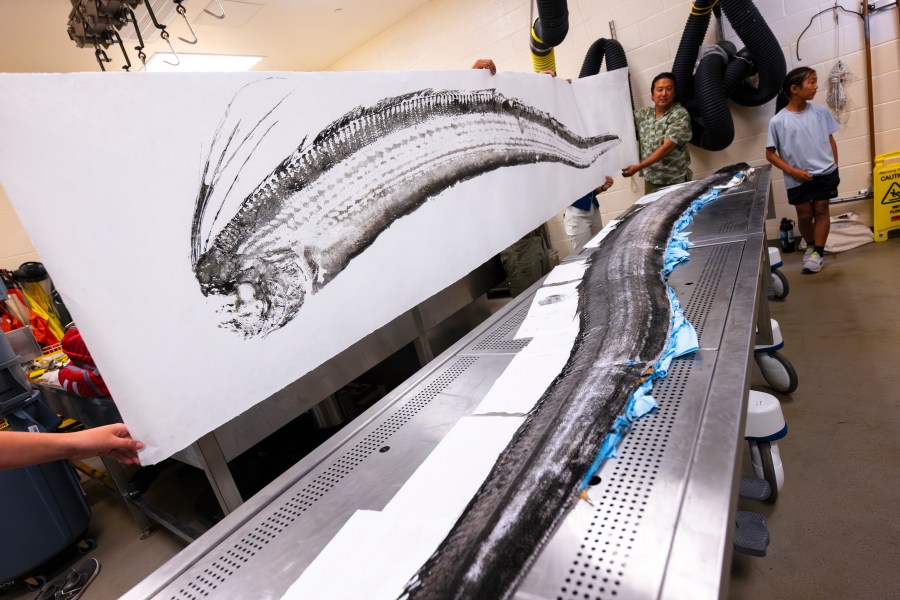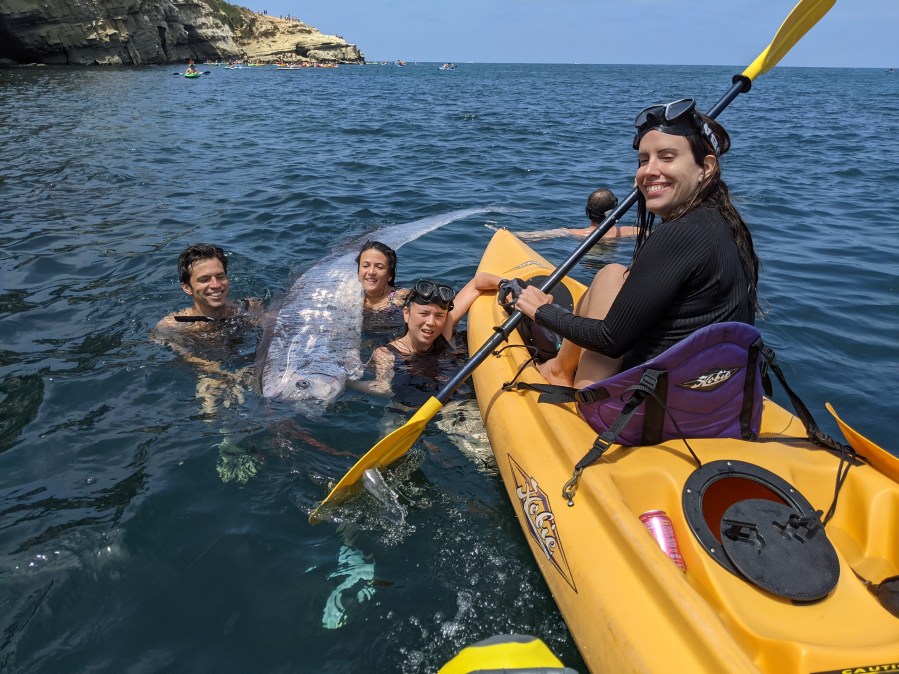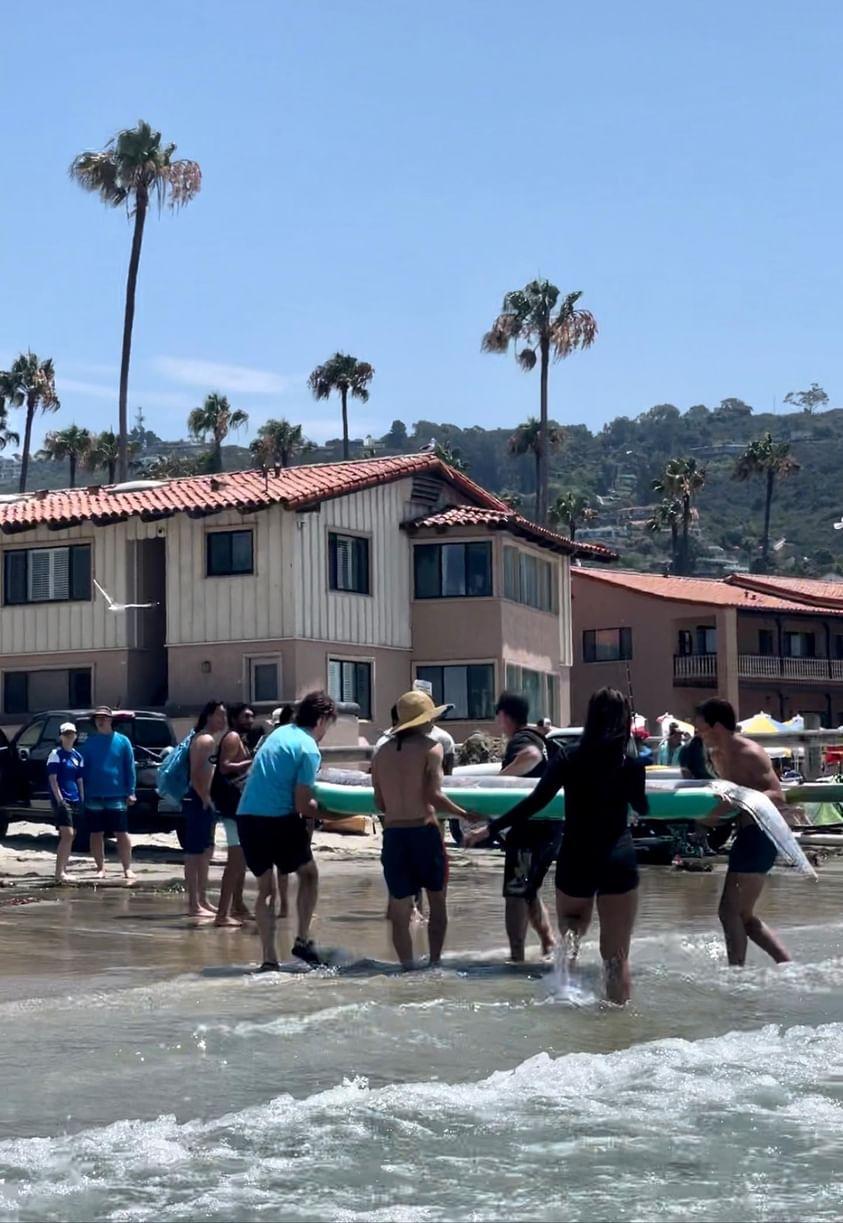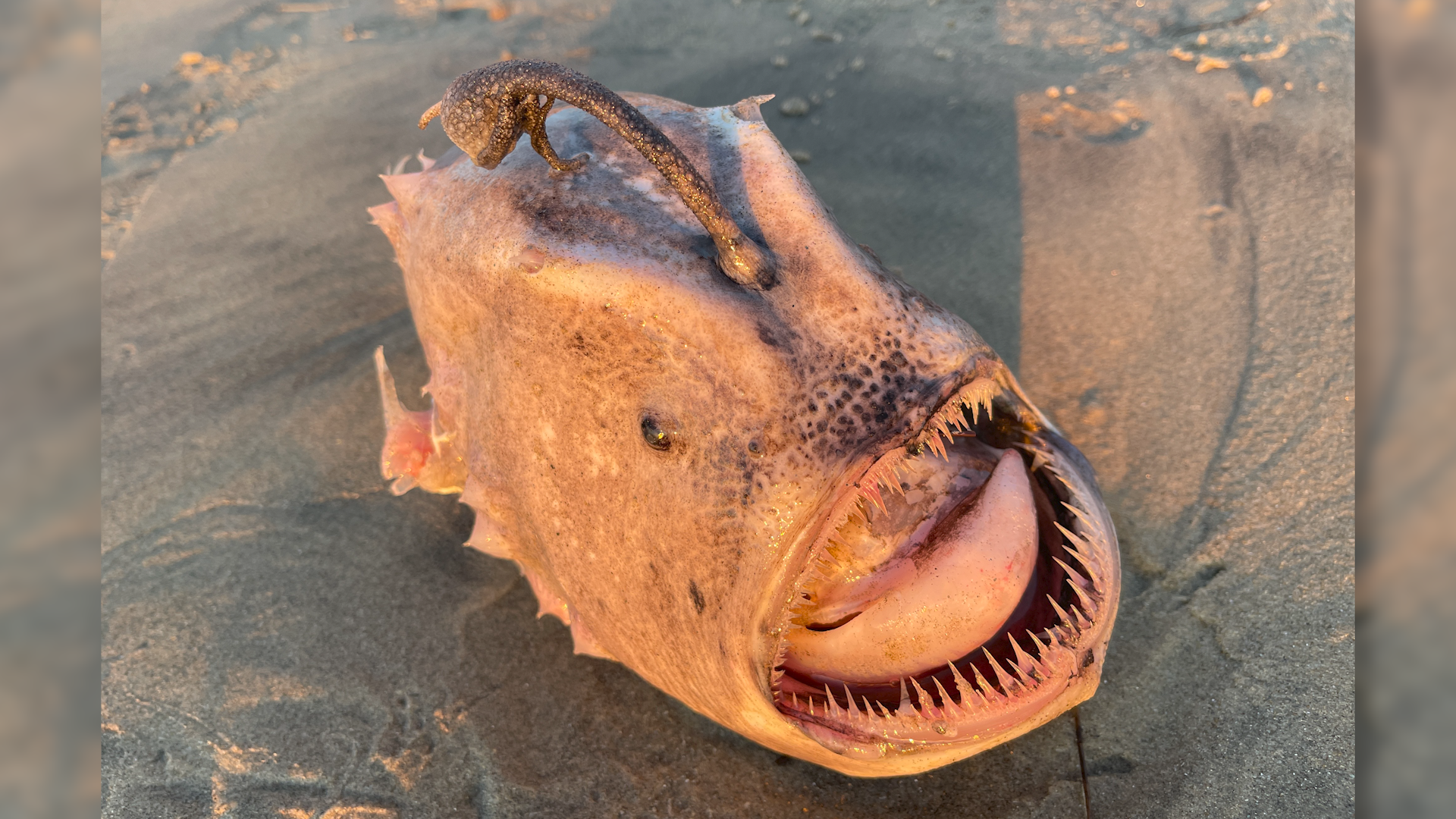The oarfish, known to history as “sea serpents,” have a hallowed place in the museum of marine oddities: They can grow to dozens of feet in length and generally swim vertically.
Scientists at UC San Diego's Scripps Institution of Oceanography have completed a necropsy on a deep-sea oarfish, which washed up earlier this month, providing a rare look and scientific data, it was announced Thursday.
Kayakers and snorkelers in La Jolla Cove ran into the already dead fish on Aug. 10 — just the 20th of its species documented to have washed up on California beaches since 1901.
Stream San Diego News for free, 24/7, wherever you are with NBC 7.
The fish was transported to the NOAA Fisheries' Southwest Fisheries Science Center in La Jolla. On Friday, a team of scientists from UCSD, Cal State Fullerton, and NOAA were able to examine the short-crested oarfish, performing a necropsy, or animal autopsy, to learn more about the organism.

Get top local San Diego stories delivered to you every morning with our News Headlines newsletter.
"Rare encounters like this provide an amazing opportunity to learn more about this species and how it lives," said Ben Frable, ichthyologist and manager of the Marine Vertebrate Collection at Scripps, and part of the necropsy team. "We are fortunate to have a large community of researchers and world-class collection that mobilized quickly to examine and preserve this fish."
The fish, which was an adult male measuring 12.25 feet long, 1.14 feet in depth and weighing in at 74.3 pounds, has a scaleless, long ribbon- like silvery body with dark spots. A long red dorsal fin crest, measuring 2.17 feet in length, extended from the top of the head, according to the necropsy data.

The oarfish, known as "sea serpents" or "doomsday fish," have a hallowed place in the museum of marine oddities: They can grow to dozens of feet in length, are the longest bony fish in the world and generally swim vertically, according to Frable.
"They get at least 25 feet, with reports in the 30-plus range," Frable said. "In terms of weight, it's estimated the big ones are 500-plus pounds!"
Legend has it that the sea creature is a harbinger of earthquakes and other natural disasters — "although no correlation has been proven," says Scripps — which makes the timing of its discovery interesting, considering that there was a quake with a magnitude of 4.4 centered near the Highland Park neighborhood of Los Angeles on Aug. 12. That temblor came on the heels of a 5.2-magnitude earthquake on Aug. 6, which was centered near Bakersfield and was felt across most of Southern California. UPDATE: Another quake, this one a 3.9, shook Lake Elsinore and portions San Diego County on Aug. 15 — Ed.
Scientists do not know why the fish -- which looked to be in good condition -- washed up where it did, though it is generally thought to have to do with injury, illness and disorientation. Frable said that La Jolla Shores is situated next to two underwater canyons that funnel deep water close to shore.
Samples from the fish will be used for several purposes, including:
- Mapping the first high-quality, chromosome-level genome for the longest bony fish in the world
- Using stable isotopes and genetic barcoding to better understand foraging ecology, or what the fish is eating and its role in the marine food web
- Describing the shape and function of the gills and gill rakers -- the elements that the fish use to filter their prey from the water -- to look at the filtering anatomy and to inform studies of metabolism and feeding strategies
- Describing the reproductive status. This male did not have visible signs of milt (sperm) and scientists have previously found that oarfish locally are reproducing in June, but not August or September

Additionally, researchers will analyze organs, tissues and body fluids for potential presence of contaminants such as microplastics and DDT and compare its digestive system with the other species of oarfish.
"This oarfish presents a rare opportunity to obtain fresh samples for genomic analysis, allowing us to study the evolutionary adaptations that enable this species to thrive in deep-sea environments," said Dahiana Arcila, marine biologist and curator of the Marine Vertebrate Collection at Scripps. "This finding also significantly contributes to documenting life on our planet, with each specimen providing valuable data to guide conservation efforts and enhance our understanding of marine ecosystems.
"Collections like ours play a crucial role in preserving these specimens for future research, ensuring that we can continue to learn from them for generations to come."
The fish is undergoing preservation to be added to the Marine Vertebrate Collection at Scripps, one of the largest collections of deep-sea fish in the world.
According to Scripps, given the immense local and global interest, the Birch Aquarium has opened a temporary exhibit with more information on oarfish. The display in the main galleria at Birch Aquarium will include a life-size "gyotaku" art print of the oarfish done by artist Dwight Hwang after the necropsy was completed. Gyotaku is the traditional Japanese method of applying ink to a fish and pressing it onto paper to create art.

A half-dozen or so amateur scientists — including Emily Miller, Michael Wang, Monica DeYoung and Owyn Gunderson — worked together on Aug. 10 to bring the sea monster to shore at La Jolla Cove, first in the water, then on a paddleboard with its tail hanging off the end, ending its journey in the bed of a pickup truck.
"Thanks to the work from these locals, scientists will be able to further study this mysterious species as it will become part of the Marine Vertebrate Collection at Scripps, one of the largest collections of deep-sea fish in the world," said, in part, a news release sent out from UC San Diego.
San Diego Ocean Life
Oarfish were found in Oceanside in 2013 and also in Catalina in 2015.
While scientists don't know why oarfish wash up on California's beaches, they say they have learned from each of the 20 specimens collected so far. Find something unfamiliar? Tell a lifeguard, send an email to scrippsnews@ucsd.edu or call (858) 534-3624.



